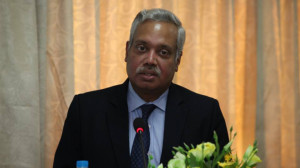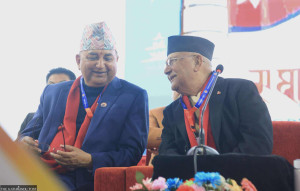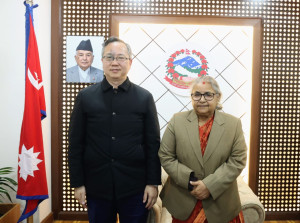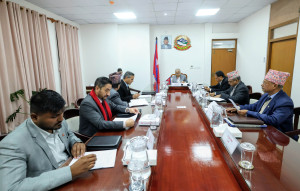National
Government delays stall two hydropower projects in Dolakha
Authorities’ failure to issue necessary guidelines for land use and tree-felling in protected areas has hit construction for three months.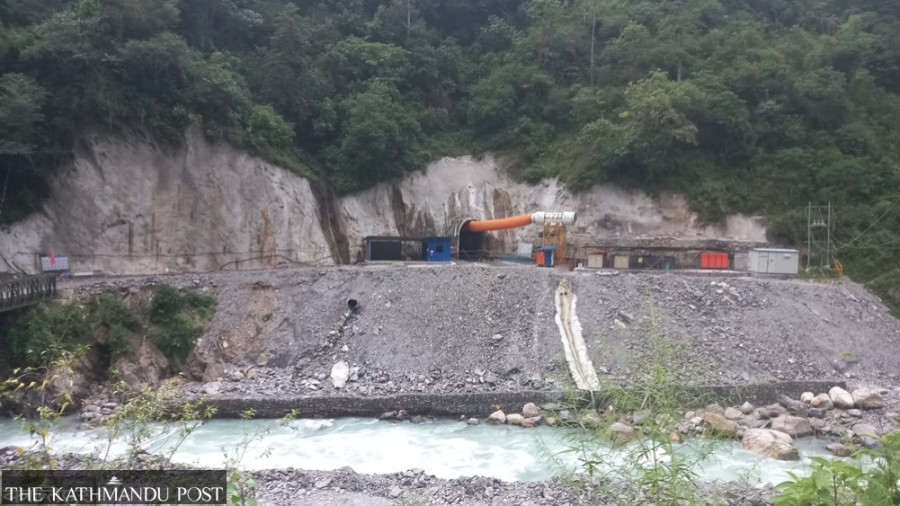
Kedar Shiwakoti
Construction of two domestically funded hydropower projects in Dolakha remains stalled for the past three months because of government delays.
The Supreme Court had ordered the Ministry of Forests and Environment to draft procedures for building hydropower projects inside national parks and conservation areas. Although the ministry directed the Department of National Parks and Wildlife Conservation to prepare them, the process has yet to move forward.
As a result, the 99.8-megawatt Tamakoshi Fifth project under the Janatako Jalavidhyut Karyakram (people’s hydropower programme) has been obstructed by the Gaurishankar Conservation Area. Likewise, construction of the 20-megawatt Rolwaling project under Upper Tamakoshi Hydropower Limited has also stalled.
The Gaurishankar Conservation Area halted both projects, saying the necessary guidelines for land acquisition, environmental impact assessment, and tree felling within conservation zones had not been finalised.
Earlier, the Supreme Court had annulled amendments to the National Parks Act that permitted infrastructure development in protected areas. In its latest order, the court directed the government to allow hydropower construction only through proper procedures.
Due to the Ministry of Forests’ failure to finalise the procedures on time, even government-funded hydropower projects have been affected. Though the ministry claimed it could move ahead after the full text of the court’s decision was published, it halted work on July 4.
Currently, construction of adit tunnel 1 and the powerhouse of the Tamakoshi Fifth project is ongoing, but work on the main adit tunnels 2, 3, and 4 has been completely stalled for the past three months. A project official said the construction company, SinoHydro, has decided to seek compensation for the period of halted work.
Binod Bhandari, chief executive officer of the Tamakoshi Fifth project, said they have repeatedly informed the Ministry of Energy about the obstruction. “We haven’t received permission for land use and tree felling in the conservation area for the past three months, so the conservation office asked us to stop work,” he said. “The procedure is in the final stage of preparation, so we have temporarily suspended construction. It might be ready by Tihar [October-end].”
He said the Ministry of Forests has already sent the draft procedure to the Department of National Parks and Wildlife Conservation, which has now forwarded it to the Ministry of Law through the Ministry of Energy.
Due to poor coordination among government agencies, the project, originally scheduled for completion in four years, is now expected to be delayed. Project officials said this will likely raise the estimated cost of Rs21.14 billion. SinoHydro’s claim for compensation for halted civil works is also expected to impact the project’s budget and timeline.
The Tamakoshi Fifth project was contracted under the Engineering, Procurement, and Construction (EPC) model, under which the selected company is responsible for detailed design, procurement, construction, and initial operation.
Earlier, the project cost had risen to Rs21.14 billion after SinoHydro’s financial proposal was cancelled and the process was delayed by a year. The investment structure includes 30 percent equity and 70 percent loan financing, with the Employees Provident Fund already signing a memorandum of understanding to provide Rs13 billion in loans.
The project will also receive investment from the general public and Dolakha residents through share offerings. Designed as a cascade project, Tamakoshi Fifth will use the existing infrastructure of the Upper Tamakoshi Project. The main construction involves an eight-kilometre tunnel and an underground powerhouse.
Since the project will use water discharged from the Upper Tamakoshi tailrace, it does not require a separate dam, desander, or headworks. The tailrace water will flow directly into Tamakoshi Fifth’s tunnel. As Upper Tamakoshi is a semi-reservoir project, Tamakoshi Fifth will also function as a semi-reservoir project, using the same storage system.
Meanwhile, the Upper Tamakoshi Hydropower Project had started work on the 20-megawatt Rolwaling Diversion Project, aimed at extending the production period of its 456-megawatt generation by diverting water from the Rolwaling River through a tunnel to the dam site. However, work on the diversion tunnel audit has been halted for the past three months due to the lack of government approval for land use and tree felling in the conservation area.




 17.12°C Kathmandu
17.12°C Kathmandu





